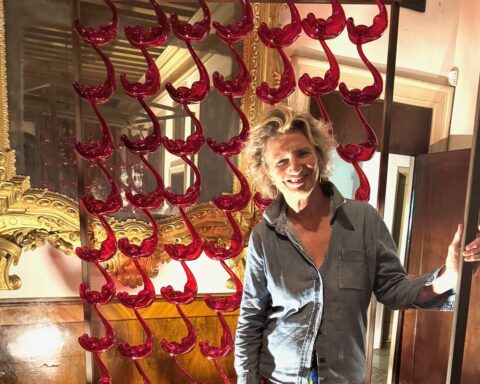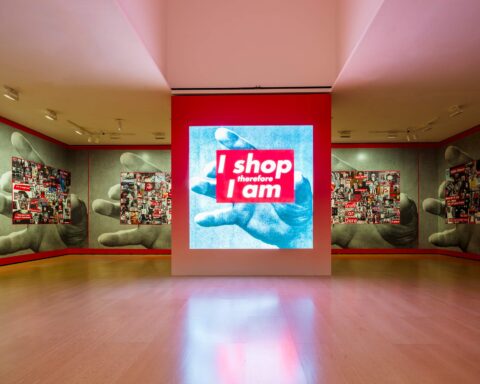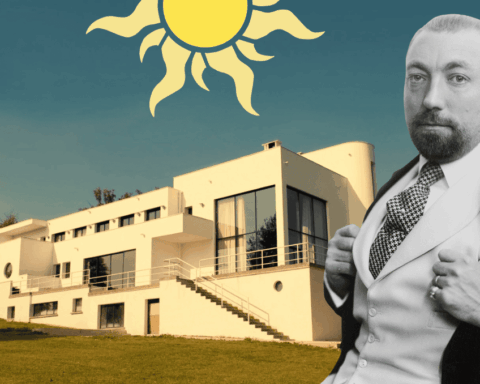He was a household name. The artist Ben, Ben Vautier, took his own life on Wednesday 5 June, a few hours after the death of his wife. A look back at the life of a man whose writing is familiar to us all.
On 5 June, the world of the arts was shocked to learn of the death of one of its great figures. A few hours after the death of his wife, Ben Vautier, aged 88, decided to join her, “not wanting to and not being able to live without her”, according to the official family statement. “Ben and Annie were like one. There was no one without the other,” said Robert Roux, a close friend of the couple and deputy mayor of Nice responsible for culture. “She would occasionally correct him for his excesses, he would always tease her and you couldn’t see Ben without Annie and vice versa. It’s a crazy example of a truly amazing love”.
On Thursday 13 June, a tribute was paid to the couple who shared 60 years of their lives. The ceremony took place at 10.30am in Nice, their home town, on the water mirror of the Promenade du Paillon. It was an opportunity to celebrate the post-modern artist who belonged to the Fluxus artistic movement and was known for his simple yet meaningful writings.
Voir cette publication sur Instagram
Creator of life, creator of art
Born in Naples in 1935 to an Irish-Occitan mother and a French-Swiss father, Ben Vautier experienced life very quickly. After the outbreak of the Second World War in 1939, little Ben travelled to Switzerland, Turkey, Egypt and Italy, before returning to France, in Nice, ten years later.
The young man, great-grandson of the painter Marc Louis Benjamin Vautier, studied at the Parc-Impérial school and the Collège Stanislas boarding school. His mother found him a job in the bookshop Le Nain bleu. It was an opportunity for him to experience all the activities associated with the literary establishment and to form his own vision of art. Later, his mother bought him a bookshop and stationery shop, which he sold at the end of the 50s to buy a shop that he renovated to sell records. At the same time, he began a series of drawings, then living sculptures, putting his signature on passers-by, friends and family!
Ben Vautier transformed his shop into a meeting place and exhibition space, allowing everyone to exchange ideas and display their work. Over time, the address brought together members of the École de Nice (such as César, Arman and Martial Raysse) as well as artists from the Nice region. In 1959, Ben founded the newspaper Ben Dieu, and in 1960 he organised his first solo exhibition, Rien et tout Laboratoire 32.
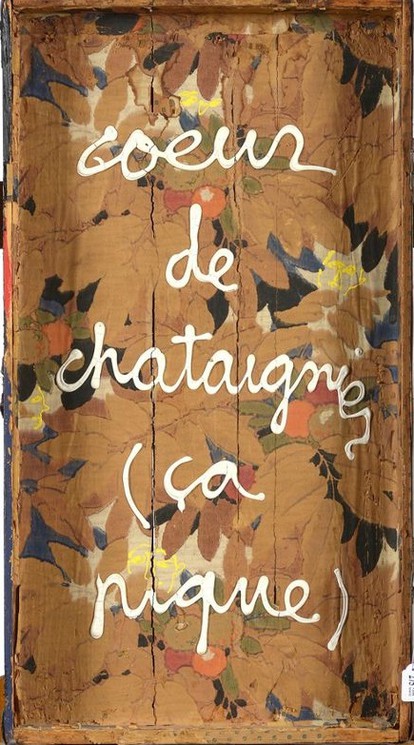
It was at this time that Ben met Yves Klein and was introduced to the Nouveau Réalisme artistic movement. He then took an interest in Dadaism, a movement characterised by a questioning of all ideological, aesthetic and political conventions and constraints. In the 1960s, the artist joined Fluxus, enabling him to appropriate the world as a work of art. His “Tas” series represents this artistic vision: Ben signs piles of earth and rubbish on land, but also boxes, mystery holes, chickens… His ambition? To link art to life. He explained that everything is art and that everything is possible in art.
In 1965, in his shop, he created a three-by-three-metre gallery on the mezzanine: “Ben doute de tout” (Ben doubts everything). Here he exhibited work by Biga, Alocco, Venet, Maccaferri, Serge III, Sarkis and Filliou. Ten years later, the Musée d’Art Moderne et Contemporain at the Centre Pompidou bought this unusual shop in Nice. In 1977, in the same museum, the group exhibition “À propos de Nice”, in which he took part, symbolised this recognition of art and research carried out outside the capital.
Exhibitions and retrospectives
In the early 1980s, after a year in Berlin, he met a number of artists, giving rise to a new group, Figuration Libre, which included Robert Combas, Hervé Di Rosa, François Boisrond and Rémi Blanchard. Some of their works were exhibited in his home and at the Galerie de la Marine in Nice.
In 1991, while several exhibitions organised by and for the artist were taking place all over France, he transformed the forum at the Centre Pompidou into a forum of questions. Four years later, his first retrospective was held at the Musée d’art contemporain de Marseille.
In 1995, in Blois, he created one of his most significant works: Le Mur des Mots (The Wall of Words), made up of 300 enamelled plaques of his most famous tableaux-écritures. This public commission was organised under the aegis of Jack Lang, the town’s mayor and Minister of Culture. A symbol of Ben’s fame.
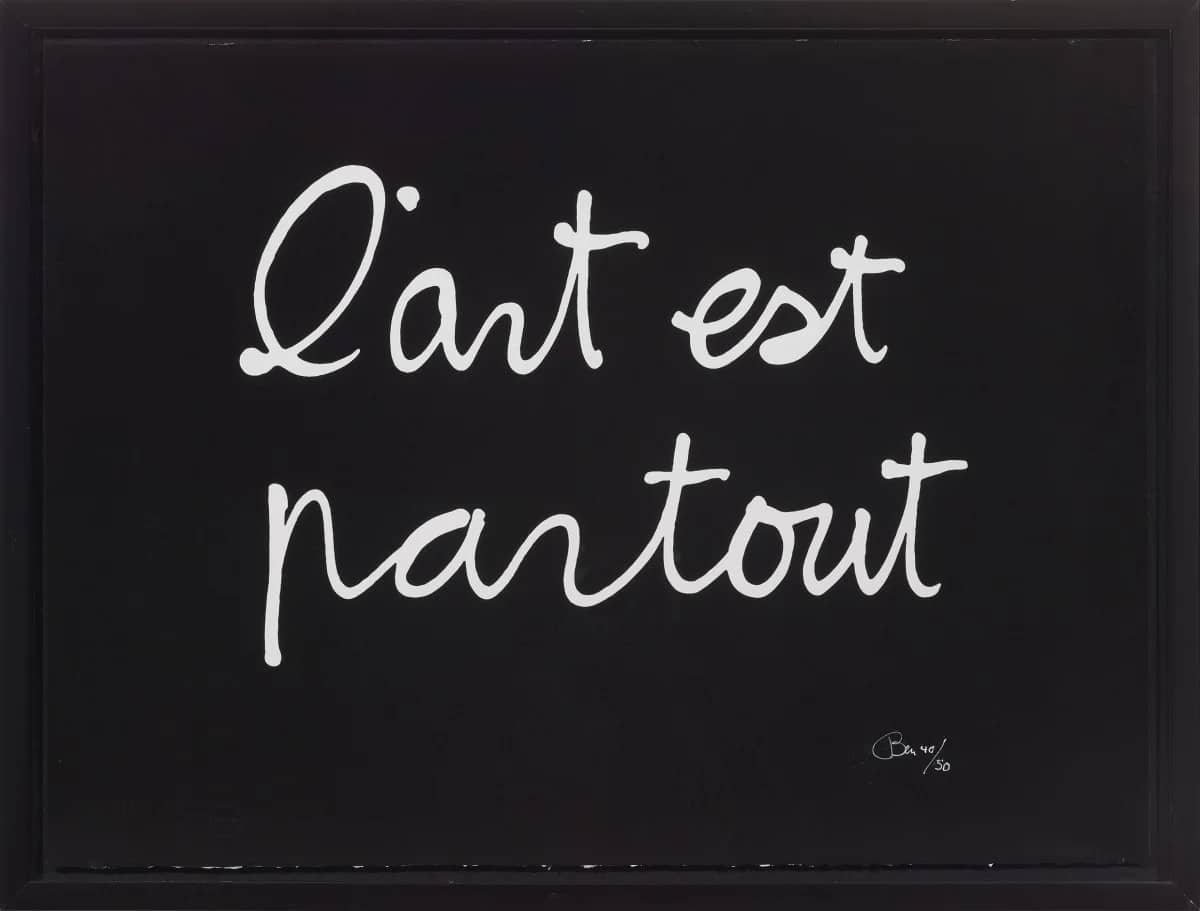
In 2001, a retrospective exhibition was held at the Museum of Contemporary Art in Nice, his home town. This was followed by “Ben, strip-tease intégral” in 2010 at the Musée d’art contemporain de Lyon, and again in 2022 at the MUAC in Mexico City.
There are so many exhibitions linked to Ben that it would be difficult to list them all. New York’s MoMA, Sydney’s Art Gallery of New South Wales, Vienna’s Museum Moderner Kunst Stiftung Ludwig Wien, Antwerp’s Museum of Contemporary Art… The artist’s influence has crossed time and borders, proving his solid reputation.
Iconic handwriting
The artist is world-famous for his round writing, which can be seen in galleries and on the street, as well as on school bags and diaries. “We must be wary of words”, “It’s courage that counts”, “Take desires for realities”, “I write therefore I am”, “Art is everywhere” are all manifestos signed by Ben, with his white writing on a black background.
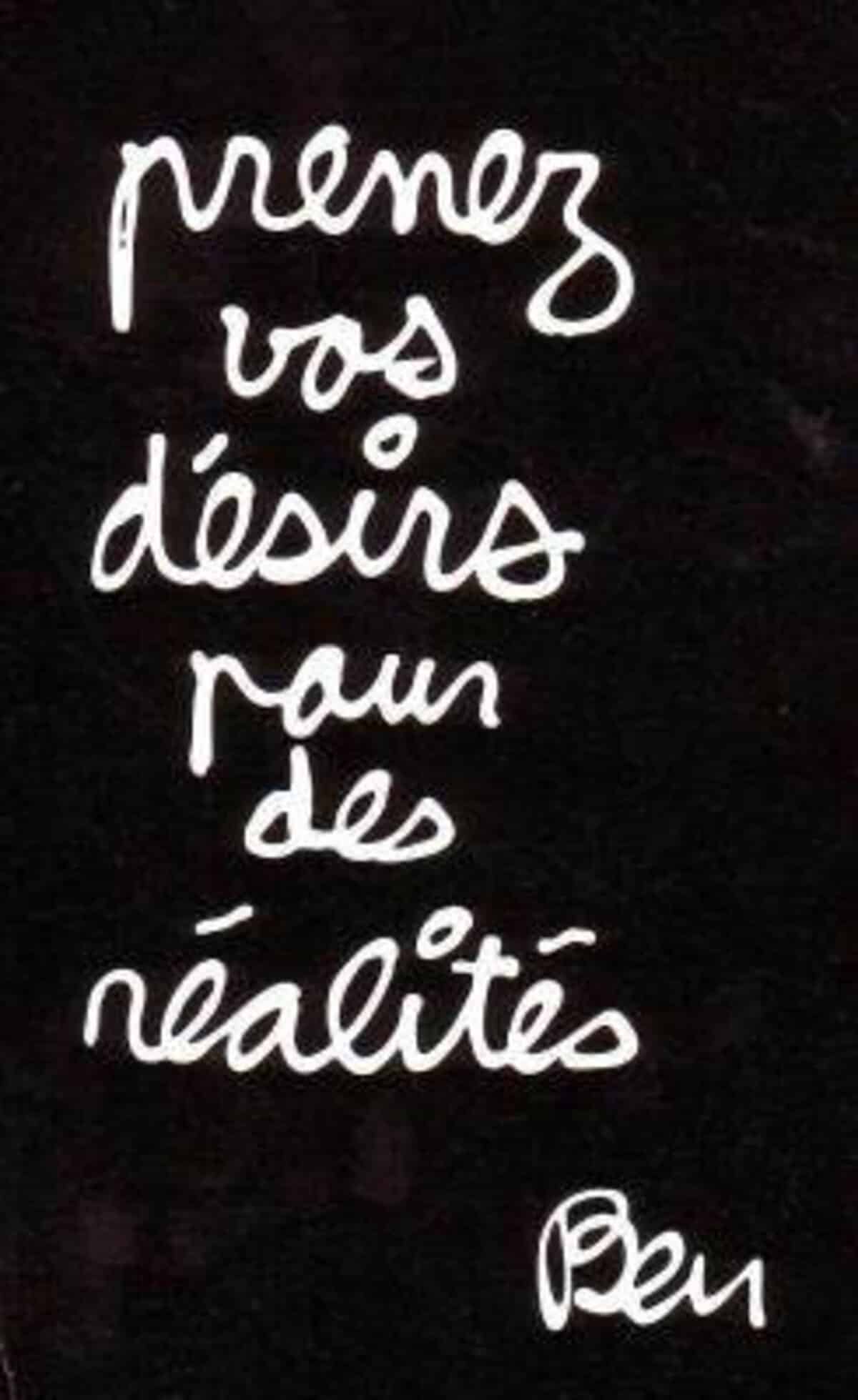
Whatever the medium, whatever the method, the aim has always remained the same: to reflect on art and integrate it into everyday life. To question. To question. To create.
Ben has also distinguished himself by his commitment to minorities and his support for young artists. Never silent, he always defended his ideas and his cultural, political and artistic convictions. Although Ben is no longer with us, his writings and works will remain forever engraved in the minds of his admirers.
Read also : Françoise Hardy: the 60s style icon is gone
Featured photo : Ben Vautier © Fondation Linda et Guy Pieters.










